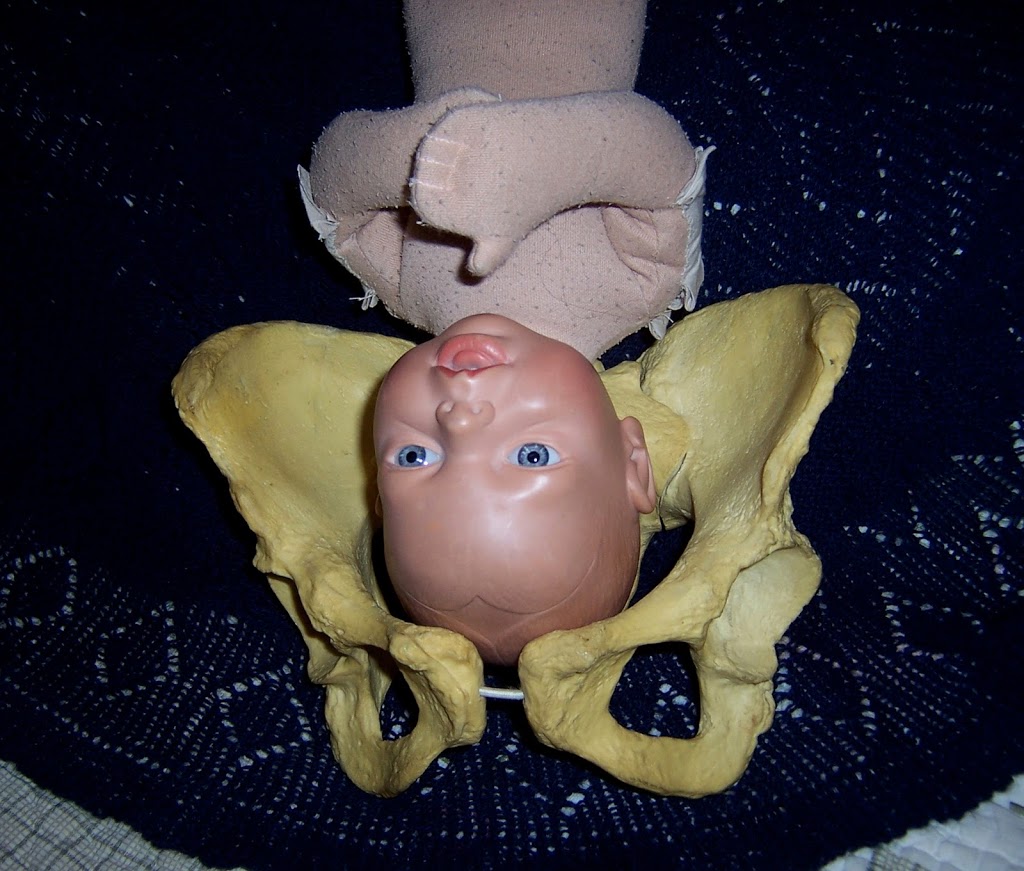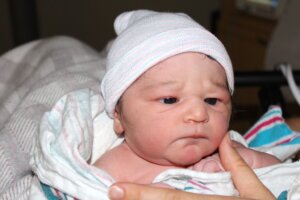Parent Education and Fetal Position

Spinning Babies® is sensitive to the fine line between informing and alarming when it comes to baby positions. There are debates about whether to tell a pregnant person their baby is posterior. Why not tell the truth?
- Fetal position is changeable (but this is often left to chance because why fetal position changes at the end of pregnancy is not well understood)
- Fetal position isn’t equally easy to tell in all abdomens. The provider might not be sure what position baby is in.
- The strategies around fetal position are still not consistent or clear
- Because the cause is not well understood in the maternity field, the provider (or doula) may not think talking about posterior is useful
- Because the cause is sometimes aimed at lifestyle, birth professionals don’t want to blame the pregnant person’s habits as a cause (see my word on blame)
- Because a provider (or doula) may not feel confident in a strategy they may prefer to think fetal position is entirely out of our control (it’s partly out of our control but mostly we can do something)
A word about blame: Our lifestyle habits are mostly shaped by the society and environment in which we live, so how we sit and what shoes we wear is not an individual’s fault. Lifestyle can become a choice and there are many choices for many good reasons. Gravity is a big determinant in fetal position. Sudden stops in gravity can cause muscle tension or uterine torsion and that is not the pregnant person’s fault either! Consequences of events do happen but it is not useful or nurturing to blame.
We want childbirth education to be informing and empowering. Just because our approach won’t work for everyone is not a reason not to inform everyone. Our passion shouldn’t become aggressive. Our passion is an invitation.
Head down?
Around 26-30 weeks gestation, pregnant parents are pleased to hear their breech or sideways-lying baby is now head down. Some parents aren’t informed of baby’s position until around 36 weeks. During the last the provider wants to know whether a baby is breech and may need help turning head down or to schedule a cesarean on their operating calendar.

Facing back?
But head down is only half the story as which way a baby faces can also mean the difference between a vaginal birth and a cesarean. Baby becoming head down will help avoid cesareans for the reason of breech position. But once head down, there are more considerations, like the angle of the head. When baby faces back in an anterior position, the angle of the head is usually ideal for working through the pelvis with the help of movement and gravity.
Fear or fact?
There are discussions among birth educators, midwives, and doulas on the pros and cons of telling pregnant persons whether their baby is posterior or not. Some express the opinion that babies can change their position at any time and so whether the baby is posterior in pregnancy is not worth alarming parents. Others feel that knowledge is power and since the intervention rate is higher, even though not absolute, with posterior presentation, that parents want to know in time to do more preparation for easing the efforts of labor to rotate the baby.
It’s a beautiful desire of many childbirth educators, doulas, midwives and activists to reduce the information given about posterior presentation. Some of the facts could be frightening. The higher rate of long labors, tears or cesareans after a posterior presentation is not spoken of because most of these babies will turn. However, more artificial oxytocin IV drugs may be how the labor is made powerful enough to turn a posterior baby. We take the force out, not the facts. See below.

What’s the evidence?
One hospital studied 103 births in which the baby persisted in a posterior presentation (facing the front) compared to 1054 births with anterior presentations (facing the back). A little more than half the babies were known to be posterior before birth and 45 were found to be OP during the emergence of the baby.
When doctor’s attempted to turn baby manually, by turning baby’s head during a vaginal exam, the cesarean rate came down to 16.7%. Five babies who couldn’t be turned and were born by cesarean and 11 babies who couldn’t be turned were born vaginally. Compare that to 60% cesarean when no attempt was made to manually rotate the baby to anterior.
We are waiting on evidence for the use of Spinning Babies® protocols (2021) as a non-force approach to reducing the cesarean rate for posterior presenting babies.
See our page on references for a bibliography and discussions of the research.
What can we do now?
Spinning Babies® asks providers to try a physiological technique first. We find that by activating the neuromuscular signal that muscles lengthen temporarily. Often this is enough to make room for baby so that the posterior baby has the needed room for turning.
Success in these objectives inspires Labor and Delivery staff to adapt the Side-lying Release and other techniques we recommend frequently, like Dip the Hip, Shake the Apples as a buffer before going for a cesarean when labor doesn’t progress. Using these techniques wisely before and during labor are an effective way to help create room in the pelvis for baby to turn on their own.
Because we see success, not 100% but still a high percentage, we consider parent education to be empowering and choose a gentle but honest approach to fetal position questions.
Yes, babies do change and can change at any time, but that doesn’t mean all babies can change position at any time. Babies don’t float in a water balloon.
The womb is connected by fascia (ropey ligaments and membrane sheets) to the pelvis and abdominal organs. The pelvis is aligned or misaligned by muscles and tensions in the connective tissue, as well. Body balance means bringing the baby, womb, and pelvis all together in alignment.
Once that occurs, through self-care techniques or through professional bodywork, then the function of the body works with more ease. I believe a flexed baby is reflecting best function. Head down is a response to gravity. With body balancing, this becomes more possible. Again, not 100% of parent-baby pairs will have an anterior, head down baby even with good balance. We don’t have to be perfect, either.
The best baby position is the position in which baby fits the pelvis during labor with progress and without trauma. If you’d like more help, see SpinningBabies.com or check our our
- Daily Essentials for full range of motion and sitting tips to enhance the balance you have
- Parent Class for techniques to restore balance and recognize a well-progressing labor and what to do if it is taking long or feeling too intense.
Reference
Sen, K., Sakamoto, H., Nakabayashi, Y., Takeda, Y., Nakayama, S., Adachi, T., & Nakabayashi, M. (2013). Management of the occiput posterior presentation: a single institute experience. Journal of Obstetrics and Gynaecology Research, 39(1), 160-165.
Further Reading:
Upcoming Workshops
[tribe_events_list limit=”4″]
